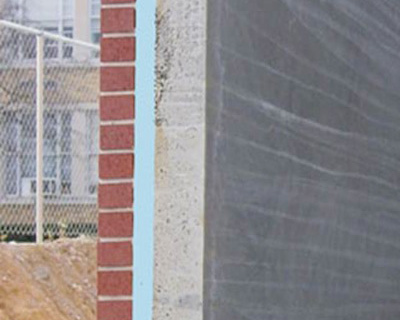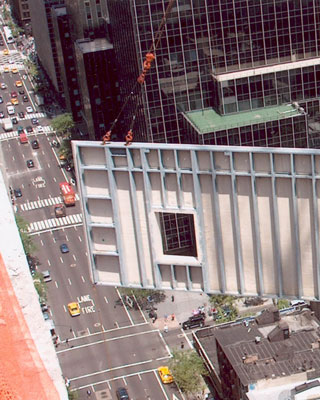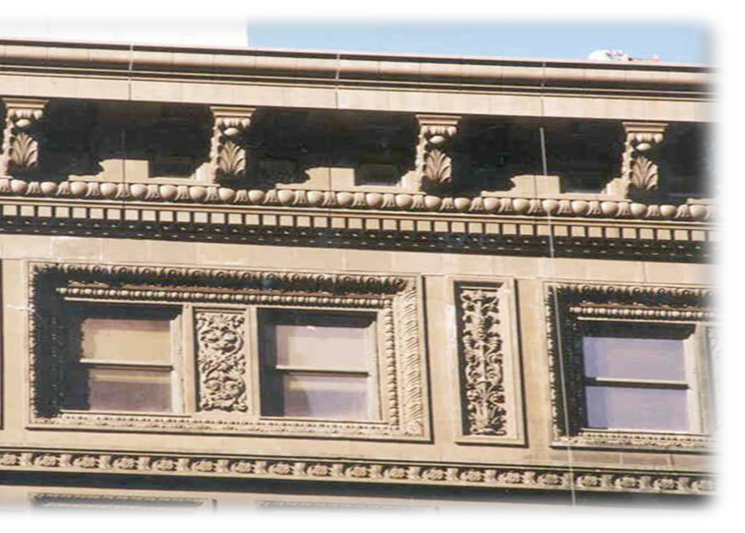Precast concrete wall systems can be comprised of a variety of shapes, and wall types. Typically, precast concrete wall systems fall into three basic categories: solid, sandwich and thin-shell. These can be panelized and erected in either a horizontal or vertical position and used on all types of structures, from residential to commercial, institutional to industrial. Wall panels can be designed as non-loadbearing or loadbearing, carrying floor and roof loads, as well as lateral loads.
Solid Walls
Solid wall panel refers to walls being made of solid concrete as opposed to including integral insulation. These wall systems require some form of insulation and an interior wall/finishing system to complete the building enclosures.
Typical widths: 4 to 15 ft.
Typical heights: 10 to 50 ft.
Typical thicknesses: 4 to 12 in.
Finishes: Since wall panels are cast in a flat orientation, the form side is typically the side that will be exposed to view in the final construction. This face can be made with virtually any type of finish. The back face is commonly troweled smooth or may have a light broom finish.
Sandwich Walls
Insulated sandwich wall panels can be strictly architectural, strictly structural, or a combination of both. The difference between typical panels and insulated sandwich wall panels is that the latter are cast with rigid insulation "sandwiched" between two layers, or wythes, of concrete. The insulation thickness can vary to create the desired thermal insulating property ("R" value) for the wall.
The structural behavior is either:
Composite in which the wythes are connected using ties through the insulation that fully transfer loads. The structural performance is then based on the full thickness of the panel; or
Non-Composite in which the wythes are connected using ties through the insulation, which limits performance to the individual capacities of each wythe.
Whether the panel is composite or non-composite depends on the configuration and material used for the ties. Insulated sandwich wall panels can be designed to be loadbearing and support floor and roof components. They make an ideal structural element for this purpose, normally by casting a thicker interior wythe to provide the necessary support. They can also be non-loadbearing to complete a façade.
Typical widths: 4 to 15 ft.
Typical heights: 8 to 50 ft.
Typical thicknesses: 5 to 12 in., including 1 to 4 in. of insulation
Finishes: As with typical wall panels, the panels are cast in a flat orientation, so the form side is regularly the side that will be exposed to view in the final construction. This face can be made with essentially any type of finish. The back face is generally troweled smooth or may have a light broom finish. Frequently, the interior does not need additional furring and drywall to create the finished surface.
Thin-Shell and GFRC
Thin-shell wall panels consist of a thin, outer-wythe of concrete typically ranging between 1.5 and 3 inches in thickness. This is connected to a back-up system, usually constructed of steel framing or studs, or sometimes concrete. The back-up system is what connects the wall panel to the structural system of the building and often provides the furring for interior finishes, such as drywall to be attached. Many of these systems can also incorporate a layer of rigid insulation between the exterior wythe of concrete and the back-up system.
Glass Fiber Reinforced Concrete (GFRC) is a thin-shell system where the exterior wythe of concrete contains alkali-resistant glass fibers that is normally sprayed into forms. The fibers increase tensile, flexural and impact strengths.
Both thin-shell systems reduce the weight of the panels relative to other precast wall systems. Some can also be designed as loadbearing.
Typical widths: 4 to 15 ft.
Typical heights: 8 to 50 ft.
Typical thicknesses: 5 to 12 in., including 1 to 4 in. of insulation
Finishes: As with typical wall panels, the panels are cast in a flat orientation, so the form side is generally the side that will be exposed to view in the final construction. This face can be made with virtually any type of finish. GFRC panels allow for great aesthetic details and extensions, such as cornices, due to the manufacturing process. The back face is commonly troweled smooth, but is not left exposed. The back-up systems are often used to attach drywall and/or other finish materials.
Lite Walls
Light or "lite" walls are shear walls used in parking structures cast with an opening in their center to provide visual continuity and to allow daylight or artificial illumination to penetrate deeper into an interior. The components provide openness and a feeling of security. These components should not be confused with "light wells," which are internal, open courtyards designed to provide daylight to the center of parking structures and other buildings.
As with other types of shear walls, lite walls serve as the lateral force-resisting systems in the structure. They act as cantilever beams, transferring lateral forces acting parallel to the face of the wall, from the superstructure to the foundation.
Typical shapes: Rectangular with rectangular openings to create openness
Typical sizes: 12 to 16 in. in width greater than the stem-to-stem spacing of the supported double tees
Finishes: Lite walls are cast in a horizontal position, with three of the four sides created with a form. These finishes are very smooth and most often remain "as cast" in the finished construction. The fourth side is typically troweled to match the other three sides as closely as possible.
Design Resources
Designer's Notebook: Getting started Designing Architectural Precast Concrete
High Performance Insulated Sandwich Wall Panel Design Guide SOA (3.3mb PDF)








